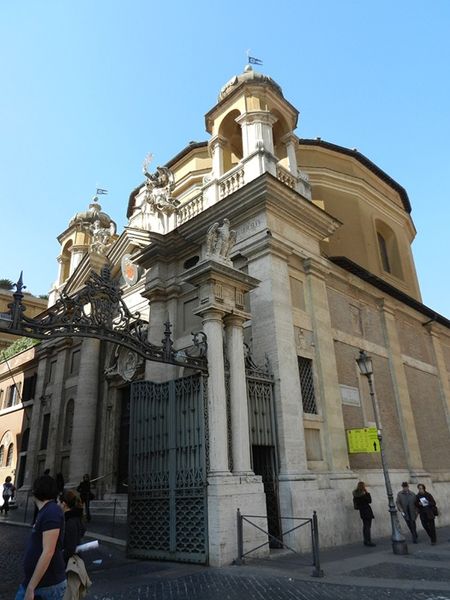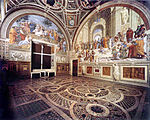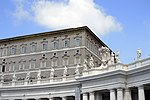Sant'Anna dei Palafrenieri

The Church of Saint Anne in the Vatican (Italian: Sant'Anna in Vaticano), known as Sant'Anna de' Parafrenieri (English: Saint Anne of the Grooms), is a Catholic parish church dedicated to Saint Anne in Vatican City. The church is the parish church of the State of Vatican City and is placed under the jurisdiction of the Vicariate of the Vatican City and is located beside the Porta Sant'Anna (Saint Anne's Gate), an international border crossing between Vatican City State and Italy.Commissioned by the Venerabile Arciconfraternita di Sant'Anna de Parafrenieri, Giacomo Barozzi da Vignola introduced the oval plan to church design, for the first time in the churches of Sant'Andrea in Via Flaminia and Saint Anne in Vatican, pioneering a plan which was to become influential to Baroque architecture.
Excerpt from the Wikipedia article Sant'Anna dei Palafrenieri (License: CC BY-SA 3.0, Authors, Images).Sant'Anna dei Palafrenieri
Belvedere Street,
Geographical coordinates (GPS) Address External links Nearby Places Show on map
Geographical coordinates (GPS)
| Latitude | Longitude |
|---|---|
| N 41.904166666667 ° | E 12.4575 ° |
Address
Chiesa di Sant'Anna dei Palafrenieri
Belvedere Street
00120 , Vatican City
Vatican City
Open on Google Maps









